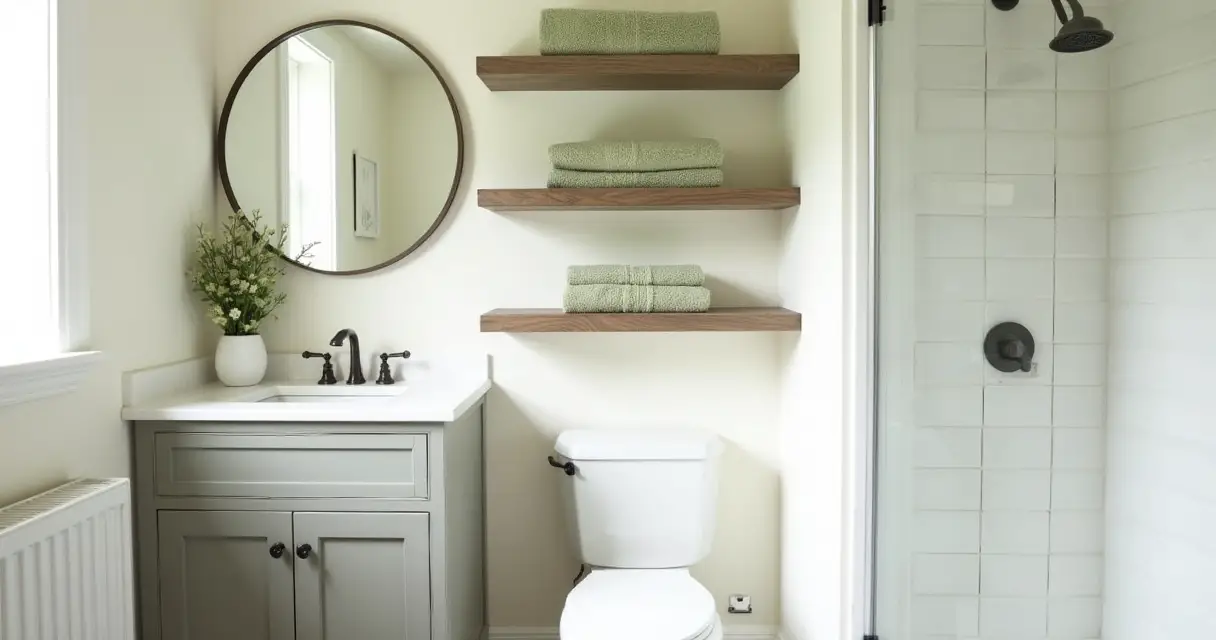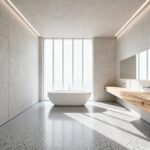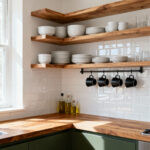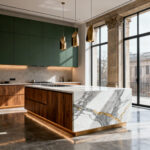Can we talk for a moment about why so many people get “farmhouse” style wrong? It drives me mad. They see a sign that says “Gather” at a big-box store, hang some faux-distressed shelves, and call it a day. That isn’t design; it’s a themed party. True farmhouse design, the kind that feels timeless and deeply elegant, has nothing to do with cheap reproductions and everything to do with a philosophy of utility, honesty in materials, and a quiet, lived-in comfort.
What truly matters is texture, quality, and balance. It’s the feeling of real, solid wood under your fingertips, the heft of a well-made bronze faucet, the softness of authentic linen. The noise? It’s all the mass-produced clutter masquerading as rustic charm. I once watched a client almost sign off on a vanity that looked like barn wood but was essentially printed laminate over particle board. We averted disaster, but it taught me that my job is to help people see the difference between a fleeting trend and a lasting investment. So, forget the BS. Here are the principles that actually create a sophisticated, authentic farmhouse space.
Laying the Foundation: Planning Your Farmhouse Aesthetic
1. Mastering the Classic Farmhouse Color Palette for Serenity
People hear “farmhouse” and immediately think “white.” And while that’s a crucial component, the real artistry is in the nuance. A sterile, gallery-white bathroom feels like a clinic, not a sanctuary. The secret is to layer warm, soft neutrals to create depth and an enveloping sense of calm. Think less about a single color and more about a sophisticated, tonal symphony. A truly luxurious space feels curated, not painted by numbers.
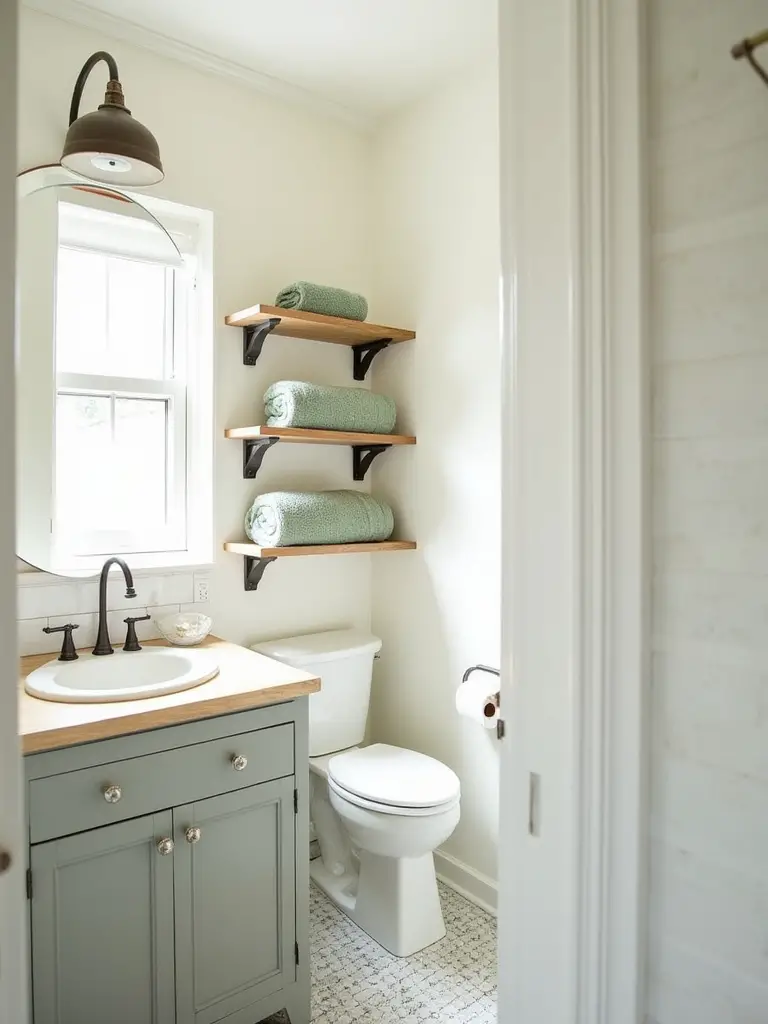
The foundation should be a creamy, complex off-white like Benjamin Moore’s “White Dove” or Farrow & Ball’s “Wimborne White.” These have subtle undertones that prevent the color from feeling stark and cold. Then, you layer in soft grays, muted sage greens, or even a dusty blue. These colors should feel like they’ve been gently faded by the sun over years, creating an atmosphere of peace and history that stark white can never achieve on its own.
Now that you have a color story that whispers rather than shouts, you need to introduce the single most important element for warmth and authenticity.
2. Integrating Natural Wood Elements for Warmth and Authenticity
This is where so many budgets go wrong. Using faux-wood materials or poorly sealed wood is a cardinal sin in a bathroom. I had a client who insisted on an untreated “reclaimed” wood vanity they found online. Within six months, the humidity had warped it into a piece of firewood. An expensive mistake. Real, high-quality wood is the soul of farmhouse design, but it must be appropriate for the environment.
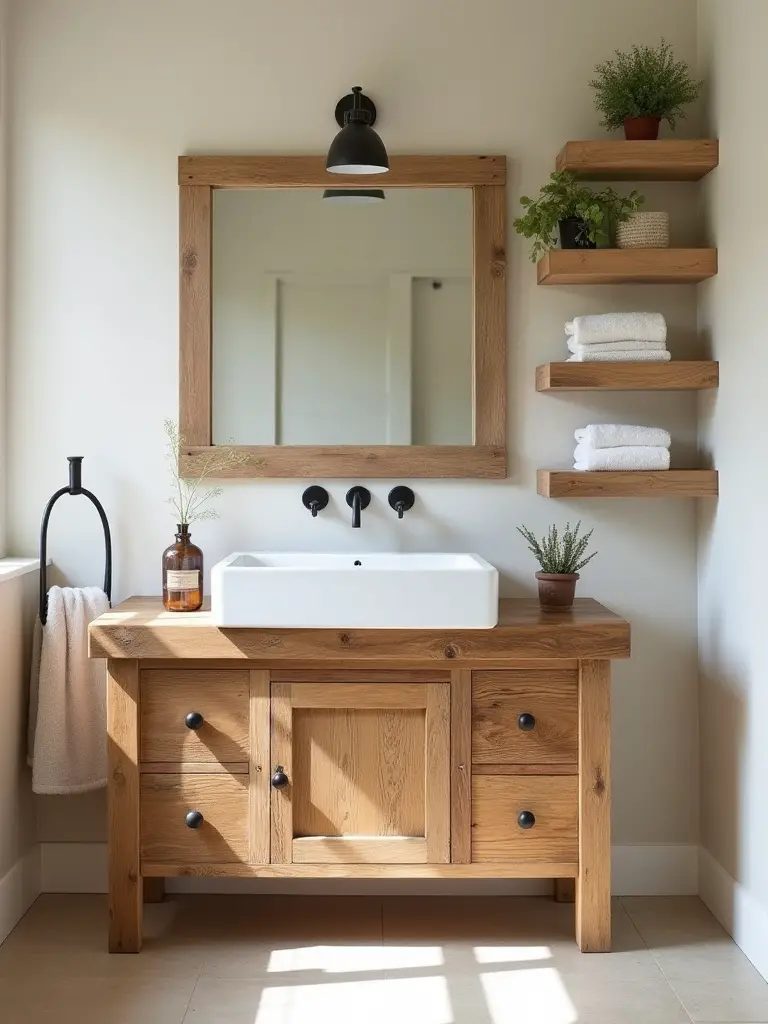
Your best investments are pieces made from hardwoods that are either naturally resistant to moisture, like teak, or have been professionally sealed with a high-quality marine-grade varnish. This doesn’t mean it has to look glossy and plastic-y. A modern matte sealant can protect the wood while preserving its natural, tactile beauty. A solid oak vanity, a simple teak stool next to the tub, or thick, reclaimed shelving—these pieces add a history and organic warmth that grounds the entire room.
With the softness of your palette and the warmth of the wood established, you need a point of contrast to give the design an anchor.
3. Selecting Matte Black or Bronze Fixtures for Rustic Contrast
Think of your fixtures as the room’s jewelry. You wouldn’t pair a bespoke linen suit with a plastic watch, would you? The same principle applies here. This is not the place to skimp. Matte black or oil-rubbed bronze fixtures provide a necessary visual weight that keeps the whites and woods from feeling washed out. They introduce a touch of industrial heritage that feels authentic and strong.
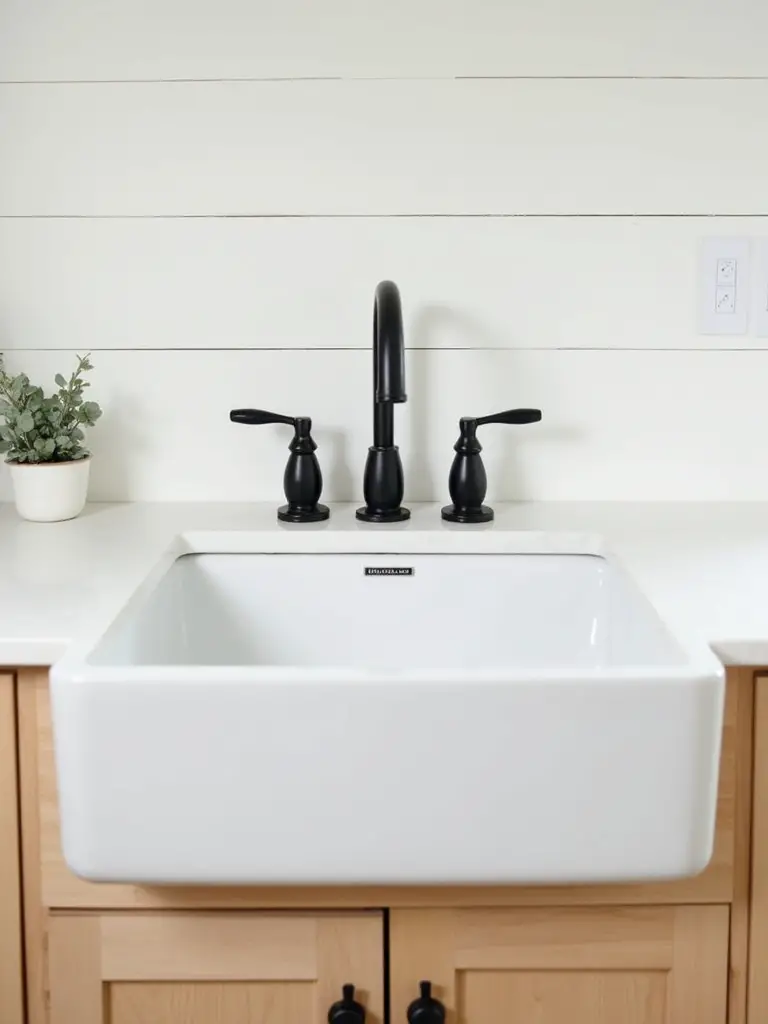
The key is consistency and quality. A beautifully crafted faucet from a reputable brand like Waterworks or Brizo has a tangible heft and a finish that endures. It’s an investment, but it’s the element you interact with every single day. The feel of that solid metal handle is a small, constant reminder of quality. This contrast is what elevates the design from simply “country” to “sophisticated rustic.”
Once the hard fixtures are chosen, it’s time to build out the architectural character of the space itself.
4. Utilizing Shiplap or Beadboard Paneling for Instant Character
Let’s be clear: shiplap is not wallpaper. It’s an architectural element that adds texture and dimension. The mistake many make is slapping it on every single wall, which can make a room feel busy or, worse, like a cliché. The sophisticated approach is to use it intentionally, as an accent, to define a space. Perhaps just the wall behind the vanity or in an alcove for the tub.
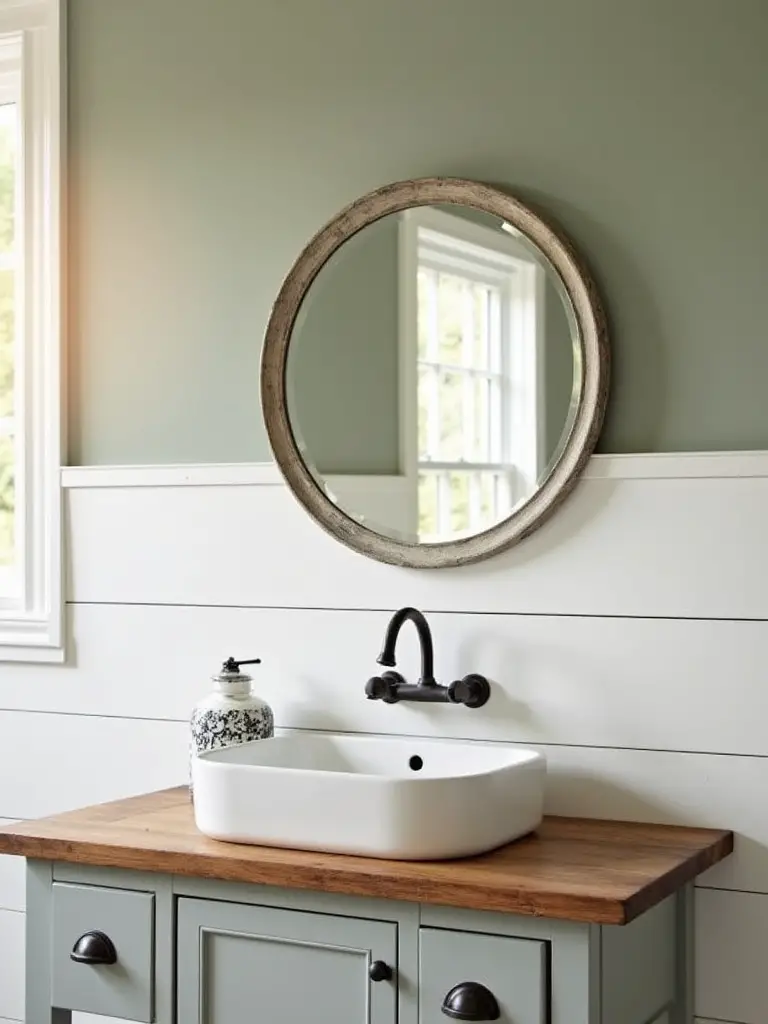
And please, consider the material. In a high-humidity environment like a bathroom, traditional wood or MDF shiplap can be a nightmare of swelling and mildew. The professional’s choice is PVC shiplap. It’s impervious to moisture, easy to clean, and once painted, it is visually indistinguishable from wood. It gives you the timeless character without any of the maintenance headaches.
With these foundational textures and colors in mind, you have to ensure they work within the physical constraints and flow of your room.
5. Assessing Your Bathroom Layout for Optimal Farmhouse Flow
You can have the most beautiful materials in the world, but if the layout is awkward, the room will never feel right. A true farmhouse feels spacious and unpretentious, even in a small footprint. Before you buy a single thing, map out the flow. Where will you stand to dry off? Is there enough elbow room at the sink? Does the door swing open and nearly hit the toilet?
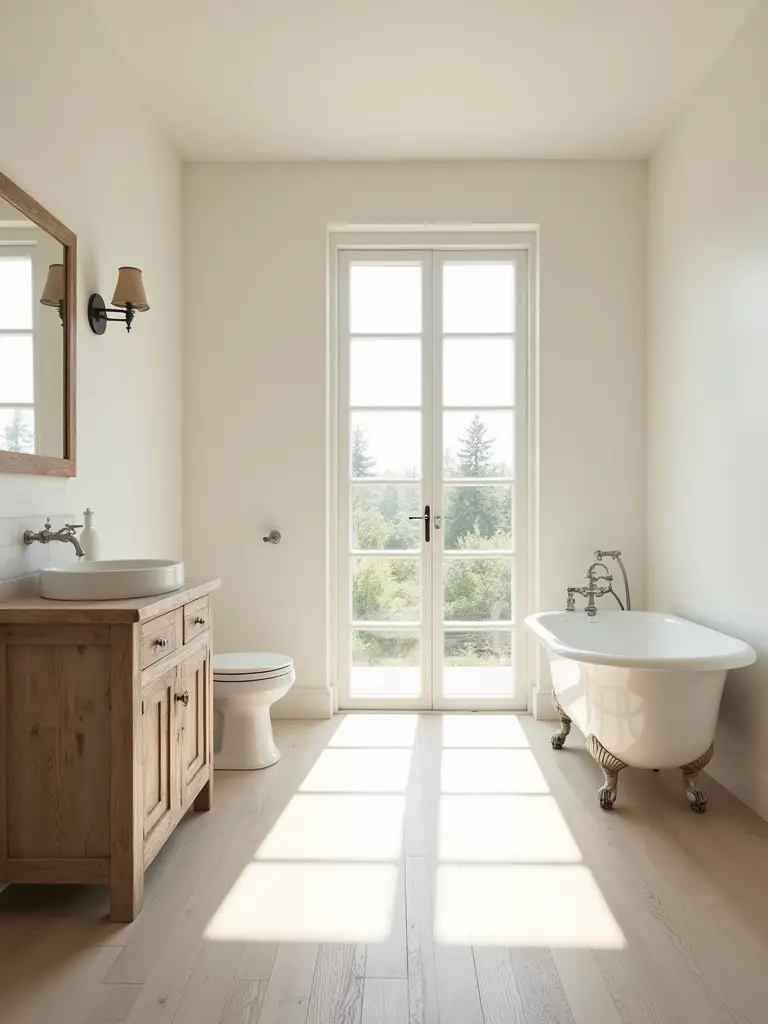
A common mistake is trying to cram in too many elements—a separate shower and a freestanding tub, a double vanity in a space that can only truly accommodate a single. Luxury isn’t about having more; it’s about having the right things in the right place. Sometimes, the most luxurious decision is to opt for a smaller, more elegant single vanity to create more open floor space, making the entire room feel more serene and functional.
Core Elements: Fixtures and Furniture with Rustic Charm
6. Opting for a Freestanding Clawfoot Tub as a Vintage Centerpiece
Nothing says “farmhouse elegance” quite like a clawfoot tub. It’s a piece of sculpture. But here is the brutal truth: not every bathroom can handle one. The number one mistake is shoehorning a giant tub into a tiny space. It ends up feeling cramped and unusable, completely destroying the sense of luxury you were aiming for. You need breathing room around it, at least a foot on all sides, for it to truly make a statement.
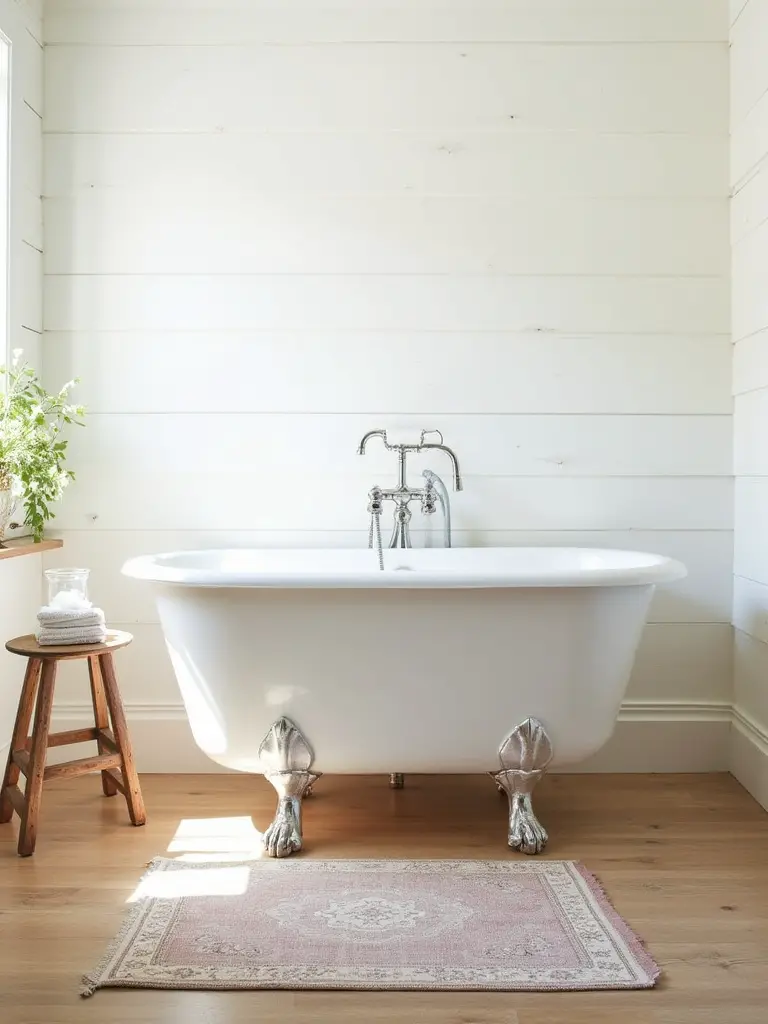
If you have the space, the next critical consideration is weight. A cast iron tub filled with water and a person can weigh nearly half a ton. Your floor joists absolutely must be assessed and, likely, reinforced by a professional. This isn’t a DIY weekend project; it’s a structural consideration. An acrylic version is a lighter alternative, but for that authentic, heat-retaining soak, nothing beats properly installed cast iron.
The tub may be the star, but the vanity is the workhorse of the bathroom.
7. Choosing a Rustic Wood Vanity with Open Shelving for Storage
This is another area where “look-alike” products fall devastatingly short. A true farmhouse aesthetic values authenticity, and a vanity is the perfect place to showcase it. Instead of a mass-produced cabinet, consider repurposing an antique piece—a small buffet or dresser can be fitted with a sink and countertop by a skilled craftsman to create a truly unique, story-rich vanity.
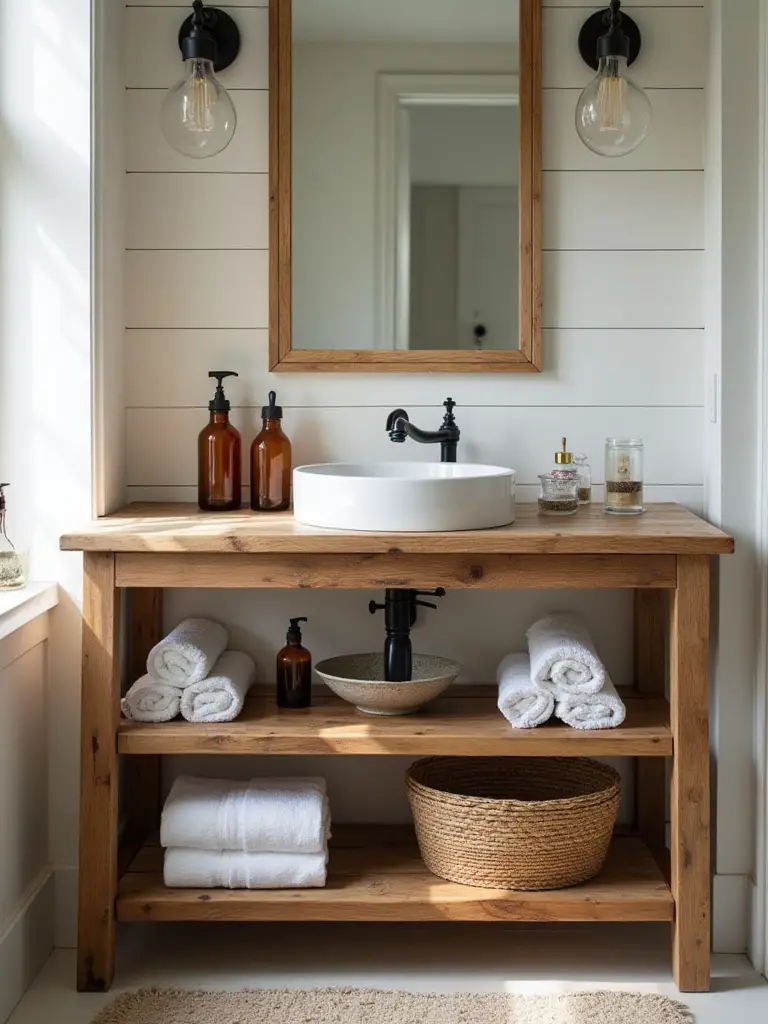
If you opt for open shelving, curation is everything. This is not a place for a chaotic jumble of neon-colored plastic bottles. Use beautiful woven baskets to conceal clutter. Decant your soaps and lotions into elegant glass or ceramic dispensers. Display neatly folded, high-quality towels. Open shelving forces you to be intentional, turning your everyday necessities into a beautifully styled vignette.
Working in tandem with the vanity, the sink itself can make a powerful statement.
8. Installing a Farmhouse Sink to Elevate Traditional Aesthetics
The apron-front farmhouse sink is a classic for a reason. Its generous depth and utilitarian charm are incredibly appealing. However, it’s not a simple swap-out for a standard undermount sink. A farmhouse sink requires a specific type of vanity base cabinet designed to support its weight and showcase the apron front. The countertop also needs to be custom-cut to fit around it precisely.
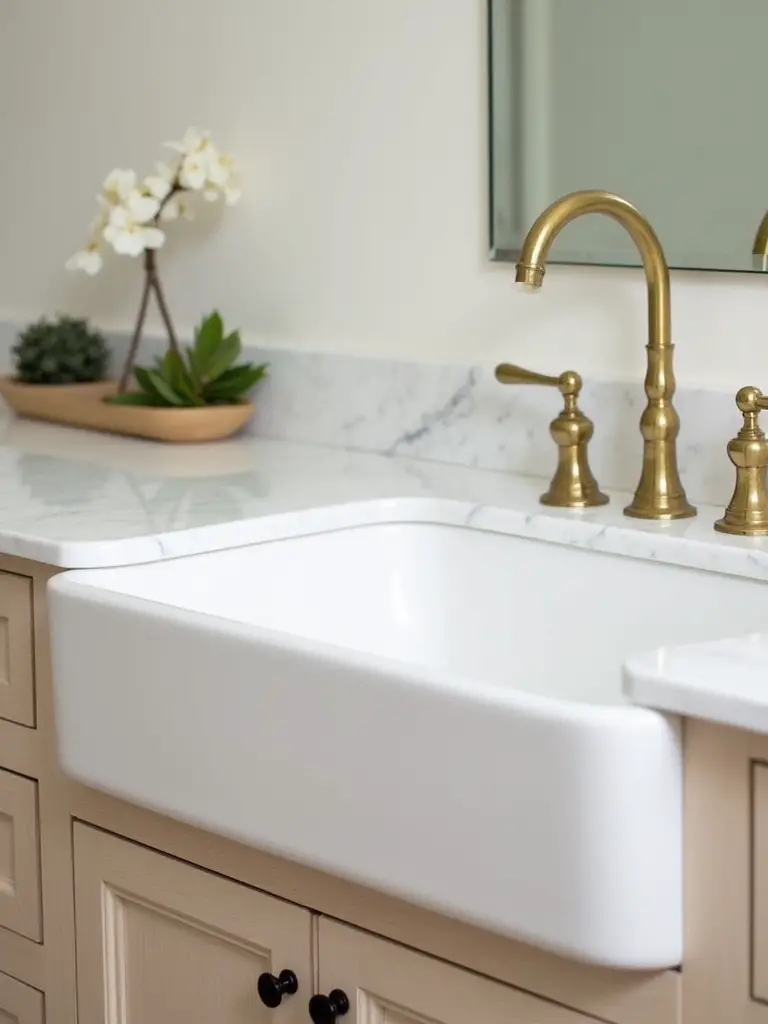
When selecting one, think about material. Classic fireclay is beautiful and durable but can be prone to chipping if you’re not careful. A stone sink, like one carved from soapstone or marble, can be a stunning and durable alternative that adds another layer of natural texture. It’s a decision that impacts your cabinetry, your countertop, and your plumbing, so it must be planned from the very beginning.
Above that stunning sink, you have an opportunity to introduce a powerful counterpoint.
9. Adding an Industrial-Inspired Mirror for a Touch of Edge
Here’s a designer secret: the key to a successful farmhouse design is to keep it from becoming too sweet or cliché. A room with only rustic wood and soft colors can feel one-note. An industrial-inspired mirror—one with a simple, clean-lined frame of dark steel or iron—is the perfect element to add a bit of sophisticated edge.
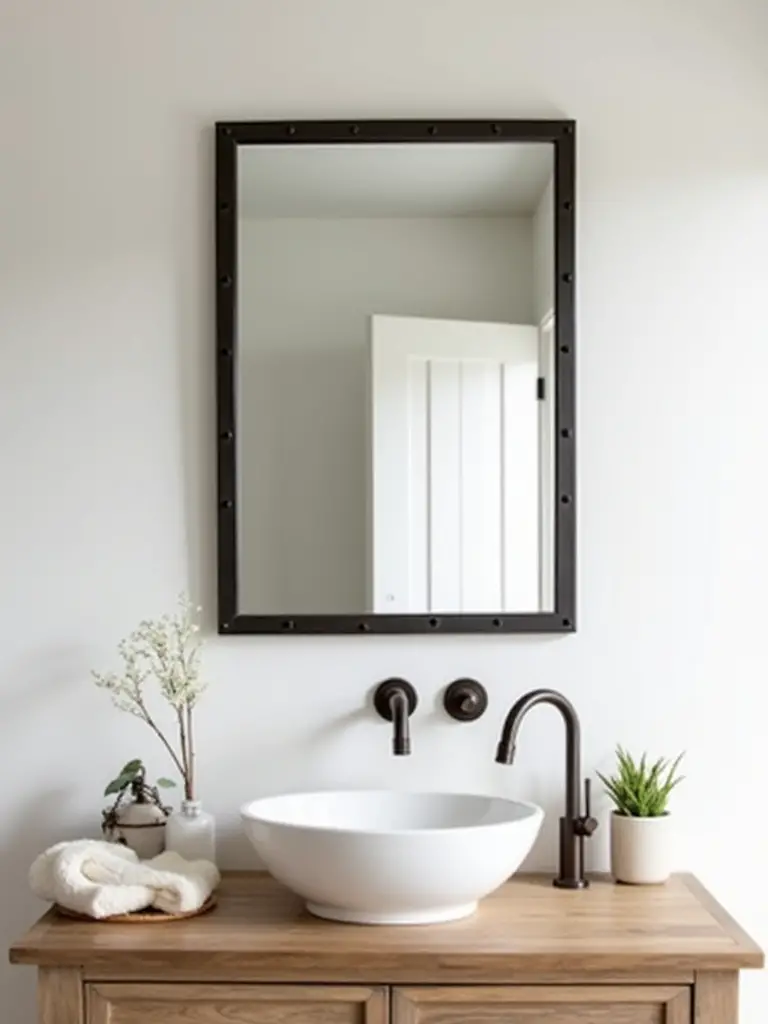
This juxtaposition is what creates visual interest. The clean, sharp lines of the metal frame provide a beautiful contrast to the organic grain of a wood vanity or the gentle texture of a linen shower curtain. It bridges the gap between rustic and modern, ensuring the space feels current and thoughtfully designed, not like a historical reenactment.
Now let’s consider the entrance, which can be both a style statement and a practical solution.
10. Selecting Barn Door Hardware for a Space-Saving Statement Entrance
A barn door can be a brilliant space-saver, eliminating the need for door-swing clearance in a tight bathroom. But for the love of all that is elegant, invest in high-quality hardware. A cheap, noisy, rattling barn door is the antithesis of luxury. It should glide silently and smoothly. Look for hardware with soft-close mechanisms and solid, heavy-duty rollers.
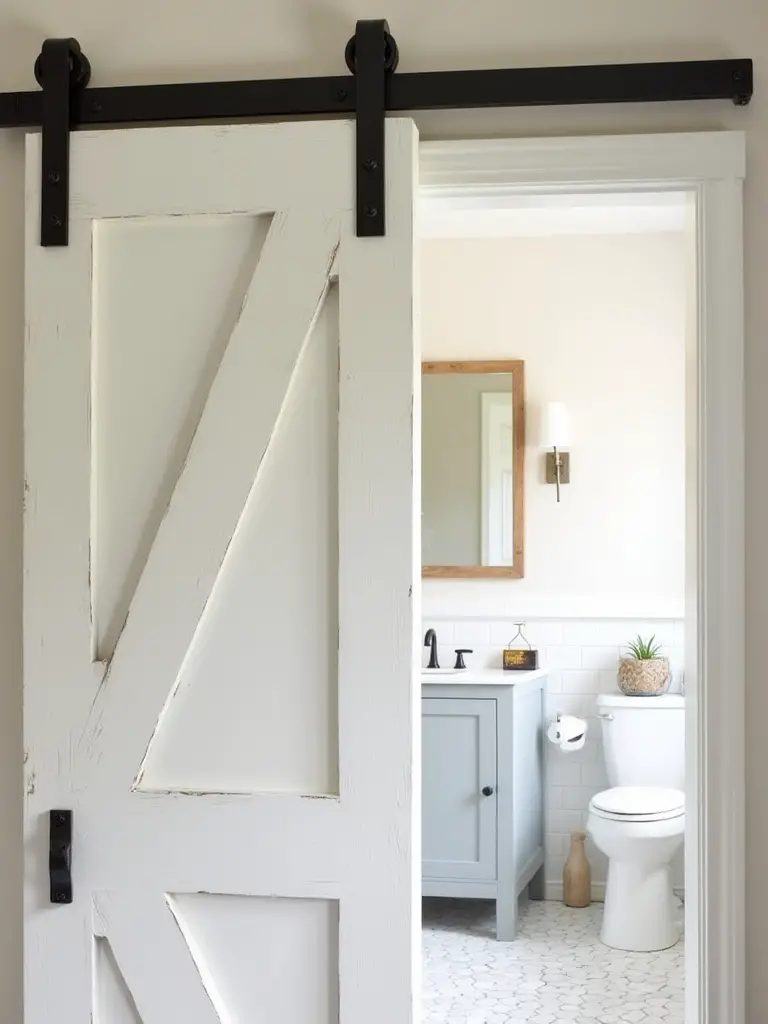
And we must discuss the privacy issue. A standard barn door does not seal the way a traditional door does, which can be… less than ideal for a bathroom. Be sure to select a door that is significantly wider and taller than the opening to minimize gaps. Some hardware systems also offer better privacy seals. It’s a fantastic look, but you must be brutally honest about whether it meets your household’s functional needs.
Decorative Touches: Functional & Charming Accessories
11. Displaying Mason Jars for Organized, Charming Storage Solutions
Yes, mason jars are a farmhouse staple, but they must be used with restraint and purpose. A few jars neatly corralling cotton swabs, bath salts, or makeup brushes on a beautiful tray looks intentional and chic. A dozen mismatched jars scattered around the room just looks messy, as if you’ve misplaced the recycling bin.
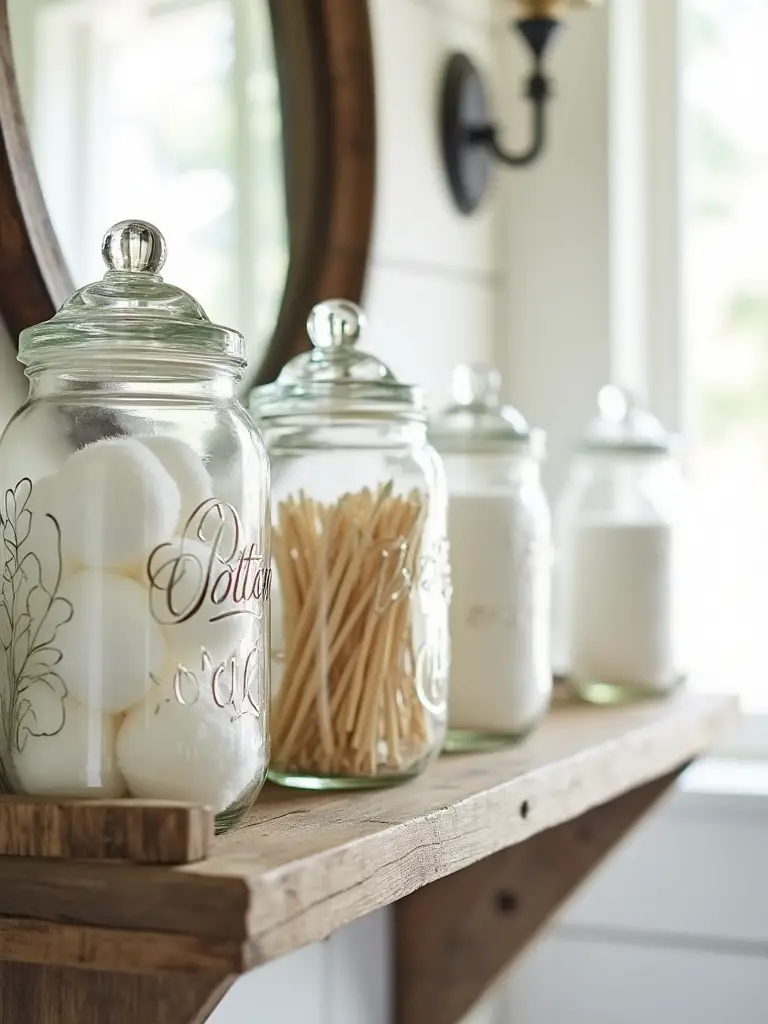
Elevate the look by choosing high-quality jars and perhaps investing in custom lids that turn them into soap pumps or toothbrush holders. The goal is to blend utility with charm. Think of them as functional tools that happen to be beautiful, not just as random “country” props.
Beyond functional jars, the walls offer a canvas for personality, but this is where taste is paramount.
12. Hanging Vintage-Inspired Wall Art or Galvanized Metal Signs
This may be my biggest pet peeve. Please, I beg you, step away from the mass-produced signs with generic phrases. Your home is not a catalogue. It’s a reflection of you. Instead of a sign that says “Bath,” find something with genuine character. A collection of vintage botanical prints, an architectural drawing, or even a beautifully framed antique map adds soul and sophistication.
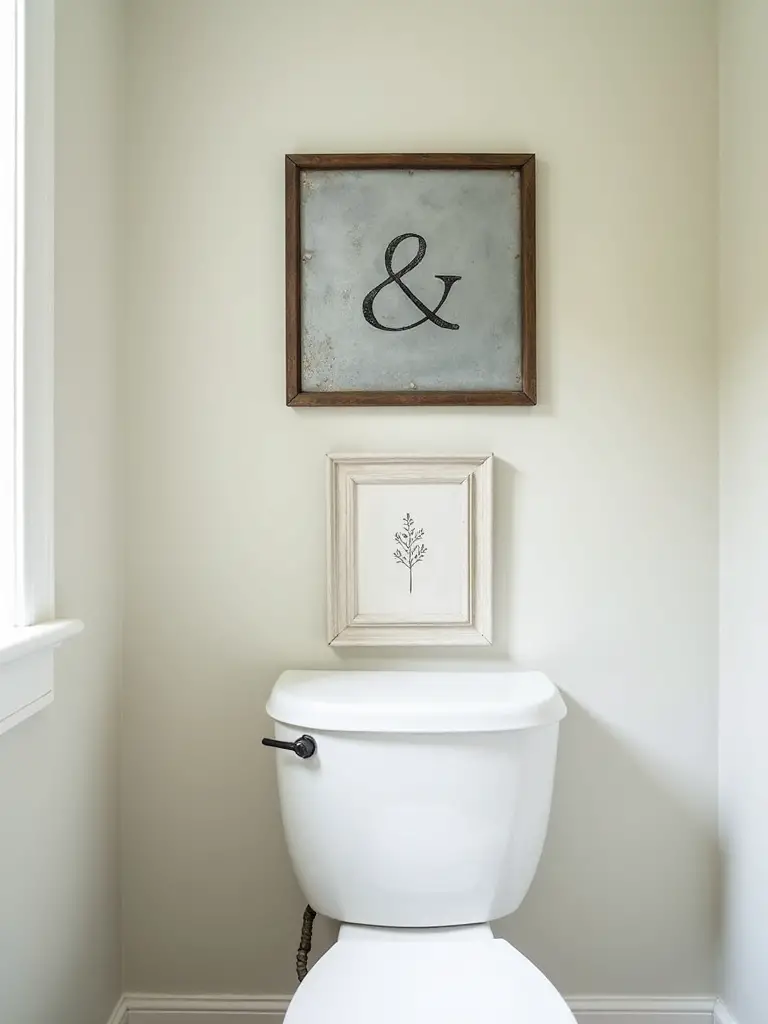
If you love the metal sign idea, search for authentic vintage ones from antique shops or flea markets. A genuine old sign has a patina and a story that can never be replicated. It’s about finding pieces that have lived a life, that bring a sense of history into your new space, turning your bathroom into a small, personal gallery.
To manage the practical needs of the bathroom, opt for storage that adds to the aesthetic, rather than detracts.
13. Incorporating Woven Baskets for Practical and Stylish Clutter Control
Like wood, baskets are a critical source of natural texture. But quality varies wildly. Avoid the flimsy, plastic-coated wicker and invest in baskets made from beautiful natural fibers like seagrass, water hyacinth, or rattan. You can feel the difference in their weight and texture. They feel substantial and organic.
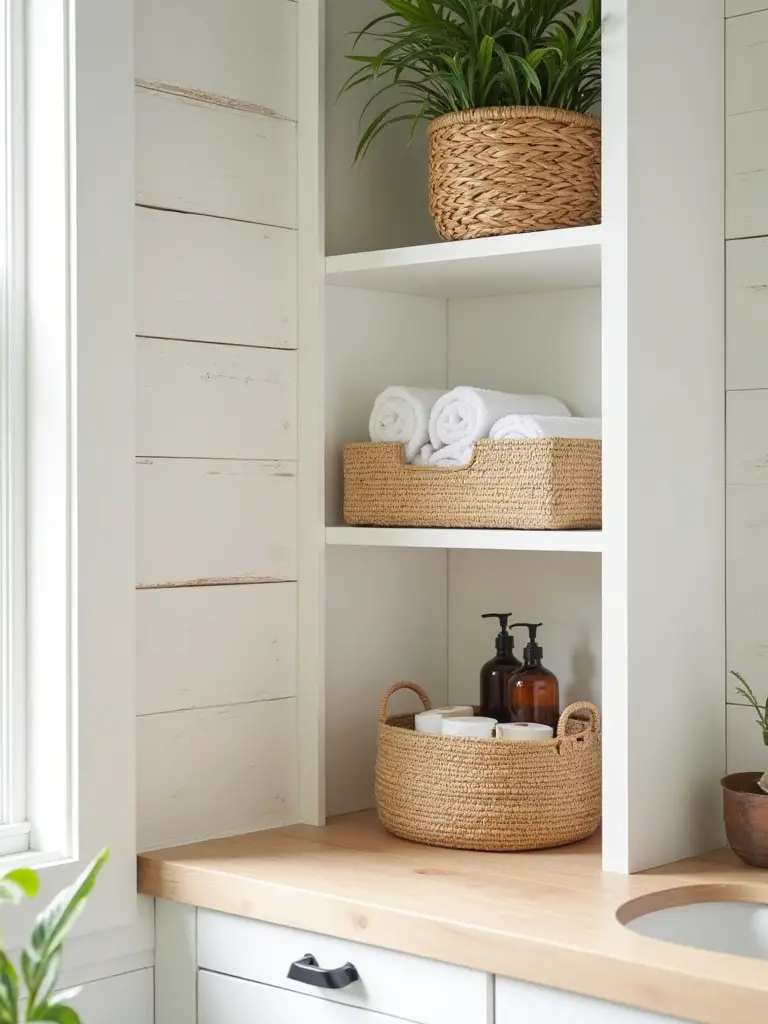
Use them strategically to hide the less-than-beautiful necessities—rolls of toilet paper, cleaning supplies, or your hairdryer. A large basket on the floor for laundry or a set of smaller baskets on open shelves brings instant order and a layer of cozy, tactile warmth to the room. They are the perfect marriage of beauty and utility.
For a truly unique space, look beyond retail and consider giving an old object new life.
14. Upcycling Found Objects into Unique, Story-Rich Decor Pieces
Upcycling is where a farmhouse bathroom can develop a true soul. An old wooden ladder becomes the most charming towel rack. A vintage ceramic crock holds a beautiful fern. A small, weathered stool beside the tub is the perfect perch for a book and a glass of wine. These pieces are what make a space unforgettable.
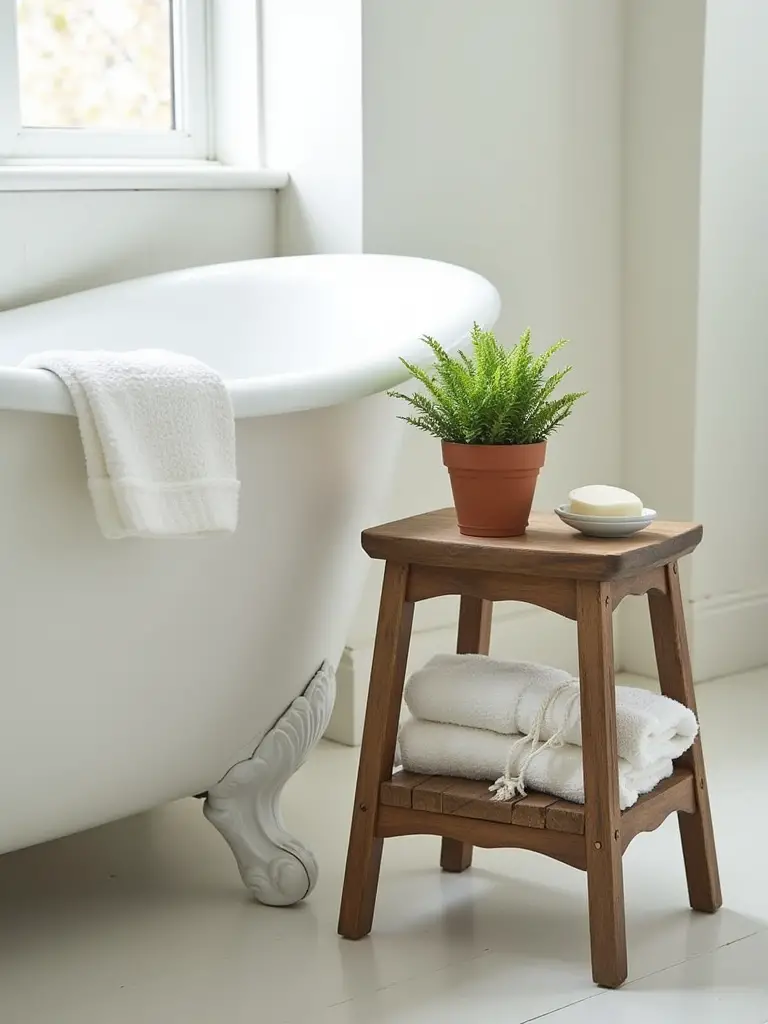
The key is that the upcycled object must be beautiful and functional in its own right. Don’t just bring in old junk for the sake of it. The piece should have good bones, an interesting shape, or a beautiful patina. And, as always, ensure it’s properly cleaned and sealed if necessary for the Humid bathroom environment.
Enhancing Ambiance: Textiles, Greenery & Lighting
15. Choosing Waffle Weave or Linen Textiles for Softness and Texture
Textiles are a non-negotiable point of luxury in a bathroom. They are the elements you touch, that touch your skin. This is where you can create a daily spa-like experience. Forgo the standard terrycloth and elevate your space with the incredible texture of waffle weave or linen towels. They are not only beautiful but are also highly absorbent and quick-drying.
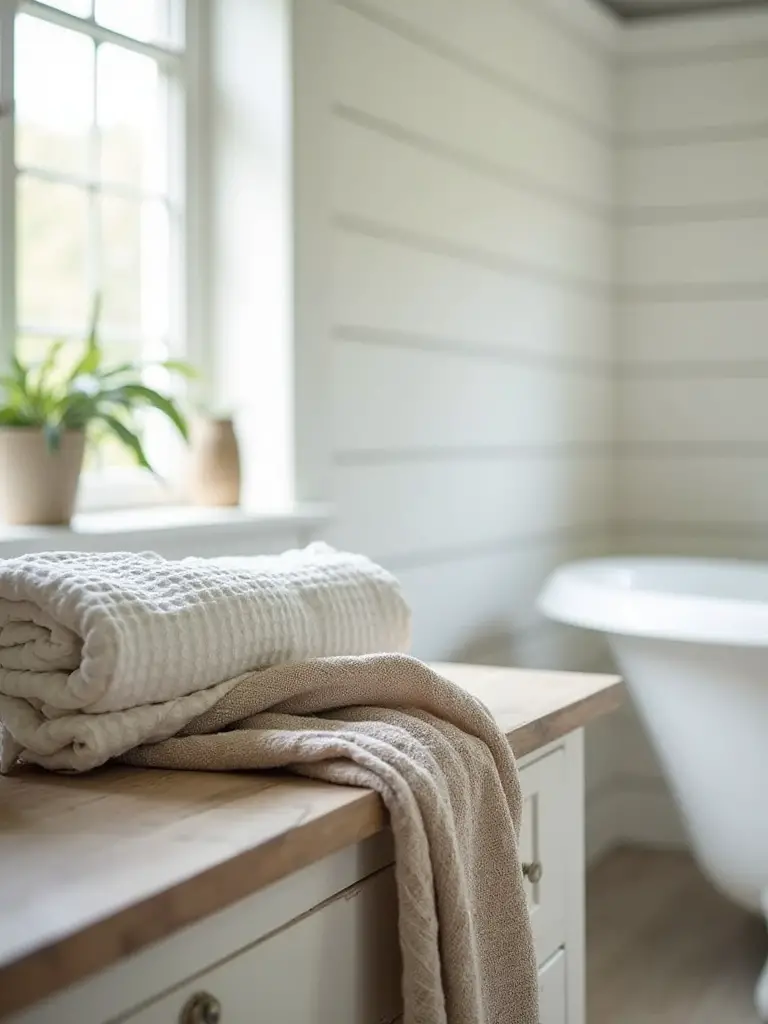
A full-length linen shower curtain, instead of a plastic liner, completely transforms the feel of a room. Its natural drape and subtle texture add a layer of soft elegance. It’s a simple swap that has an outsized impact, making the entire bathroom feel more refined and bespoke.
To breathe life into the space, quite literally, there is no substitute for the real thing.
16. Introducing Live Greenery for Freshness and Organic Appeal
One beautiful, thriving plant in an elegant ceramic pot is infinitely more luxurious than a dozen dusty, fake ones. Faux greenery has no place in a high-end design. Live plants oxygenate the air and bring an essential, organic vitality that softens all the hard surfaces in a bathroom.
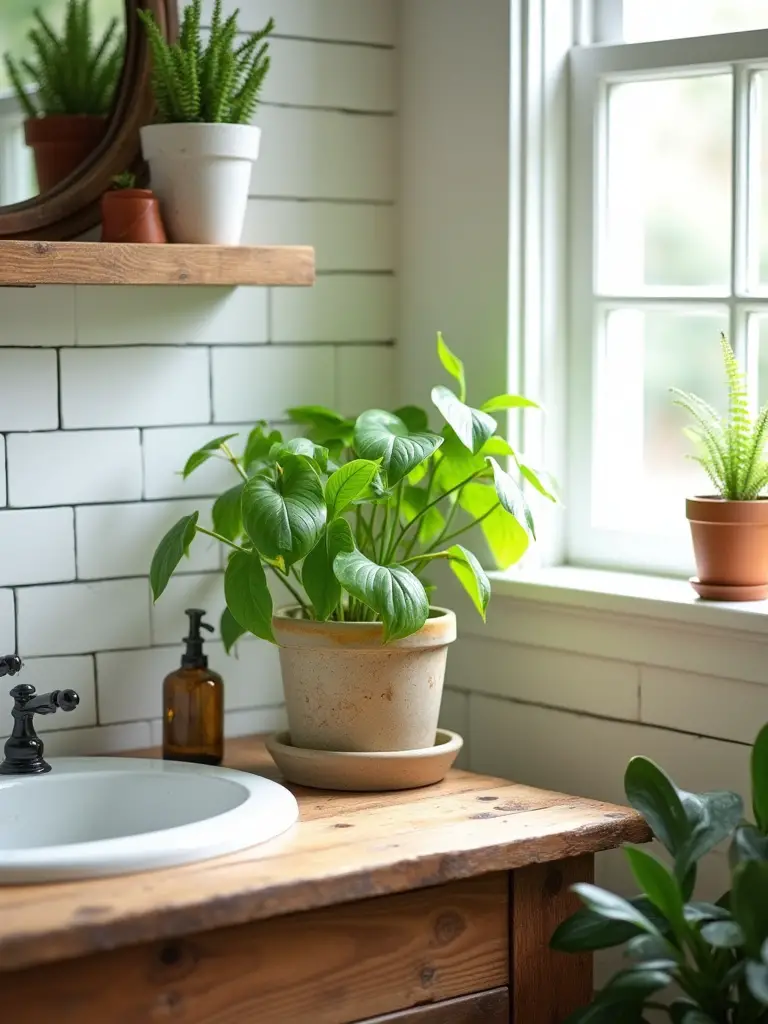
Choose plants that thrive in humidity and lower light, like a snake plant, a ZZ plant, or a pothos. The goal isn’t to create a jungle. It’s to add a simple, living sculptural element. The splash of vibrant green against the neutral palette is restorative and instantly makes the space feel more serene and alive.
Lighting is arguably the most critical element in setting the right mood.
17. Selecting Rustic Lighting Fixtures for Warm, Inviting Illumination
Bad lighting can ruin even the most beautifully designed room. A single, harsh overhead fixture—the dreaded “boob light”—is a design crime. A sophisticated bathroom requires Layered lighting. This means you need ambient light (a central fixture), task light (sconces by the mirror), and ideally, accent light. And every single one should be on a dimmer.
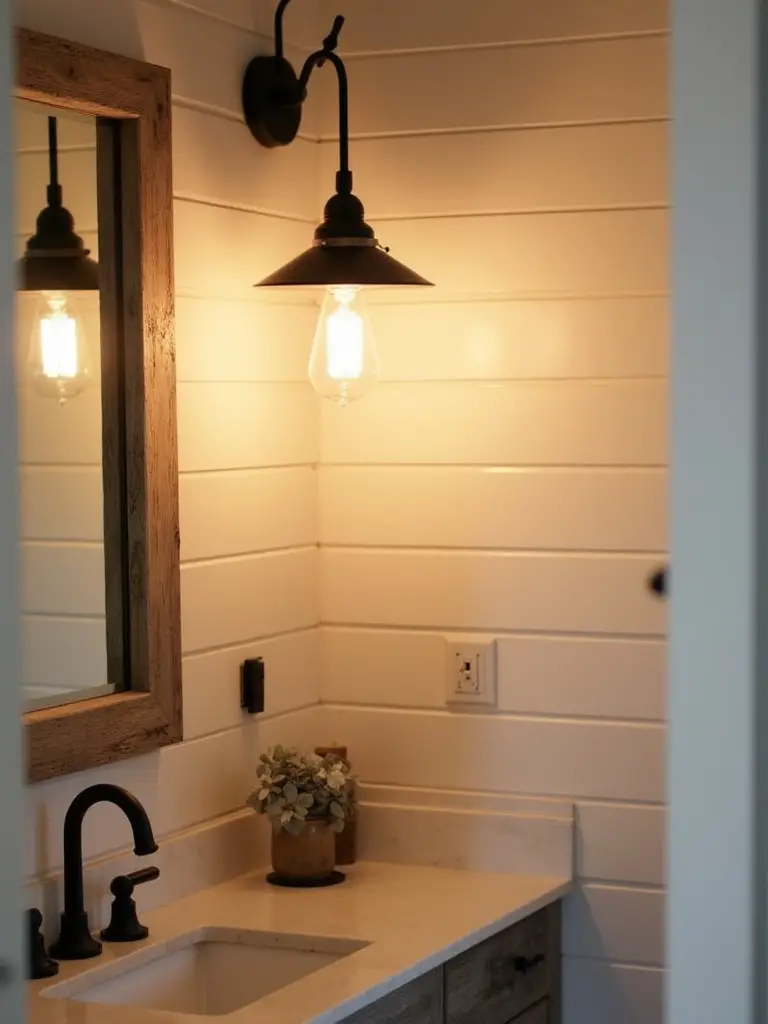
Choose fixtures that reinforce your aesthetic—sconces made of dark metal and seeded glass, a simple chandelier with wooden elements. And pay close attention to the light bulbs. You want a warm Color temperature, around 2700K, to cast a flattering, candle-like glow. This is how you create an inviting ambiance rather than a sterile, functional glare.
Finally, the most important element of all is the one that is uniquely yours.
18. Personalizing with Family Photos or Collected Antiques for Soul
A room without personal touches is a showroom, not a home. This is the final, most crucial layer. A small, beautifully framed black and white photo of your grandparents, a tiny silver dish from your travels used to hold rings, a collection of antique perfume bottles that belonged to your mother. These are the things that give a room its heart.
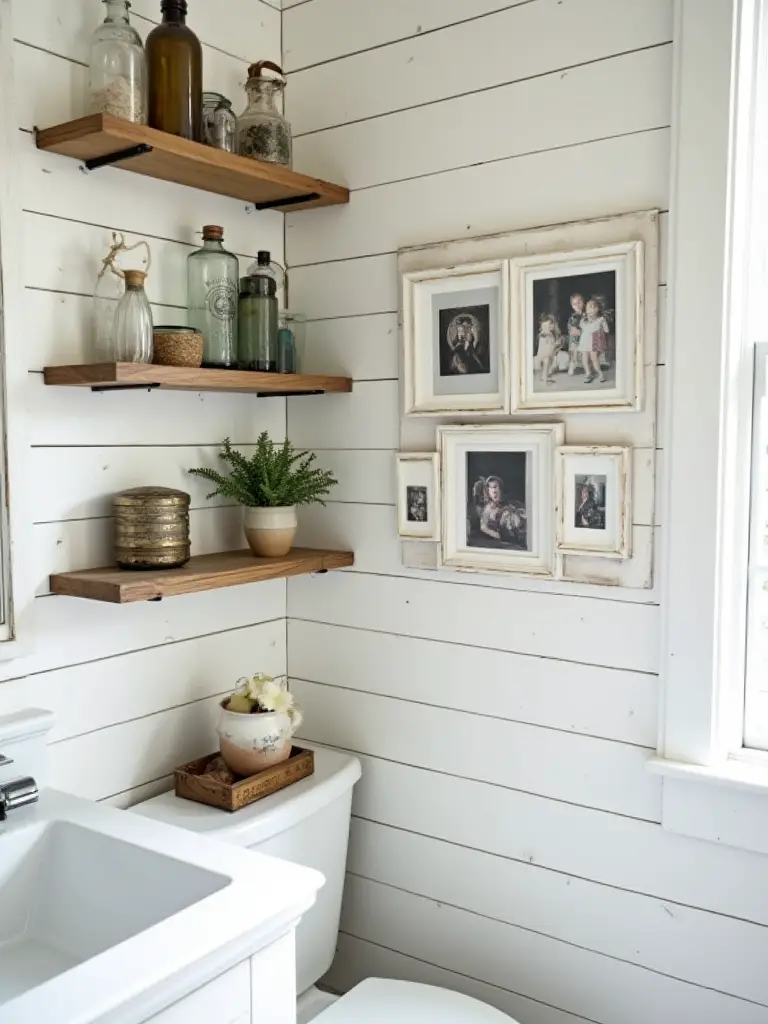
The key is curation. Choose just a few meaningful pieces and give them pride of place on a shelf or windowsill. These items tell your story. They are the details that transform a beautifully decorated room into a cherished personal sanctuary. And that, ultimately, is the true meaning of luxury.
Conclusion
Creating an elegant farmhouse bathroom is not about checking items off a shopping list. It’s about embracing a philosophy. It’s about choosing authenticity over imitation, quality over quantity, and personal meaning over passing trends. By focusing on a foundation of natural textures, a nuanced color palette, and high-quality, functional pieces, you create more than just a beautiful room. You craft a sanctuary—a serene, comfortable, and soulful space that starts and ends your day with a sense of quiet grace. Now you have the principles. Go create a space that feels like home.
